Enzyme Food Industry
Enzyme Food Industry. Lipases are used to break down milk fats and give characteristic flavors to cheeses. He was convinced that plant enzymes in food and supplements have a different function in human digestion than that of the body's own digestive enzymes.

 Classification of enzymes used in food industry, their from www.researchgate.net
Classification of enzymes used in food industry, their from www.researchgate.netOther applications include as biosensors, in polymer synthesis and in the management of pollutants in the environment. In the 1930s, edward howell, md, the food enzyme pioneer, found that there is a difference between plant enzymes and those that are produced by the body. New and unique enzymes continue to be developed for use in enzymatic reactions to produce food ingredients by hydrolysis, synthesis, or biocatalysis.
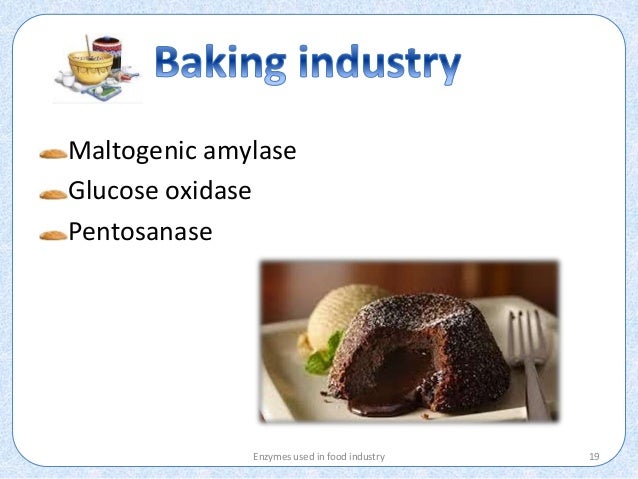
Worldwide, microbial enzymes are efficiently utilized in bakery—the principal application market in food industry—to improve dough stability, crumb softness and structure, and shelf life of products. To increase the production rate of various types of foods, applications of enzymes are very common in food industry.

The flavor comes from the free fatty acids produced when milk fats are hydrolyzed. Iconic examples include rennet for cheese making, diastase for starch hydrolysis, pectinase for pectin hydrolysis, and amylases and proteases in the production of soy foods ( poulsen and buchholz, 2003, gurung et al., 2013 ).

This enzyme is used in food industry for producing flavour, colour and texture and improving nutritional quality of food. On the other hand, tannase is used in tea to diminishes hazzyness.
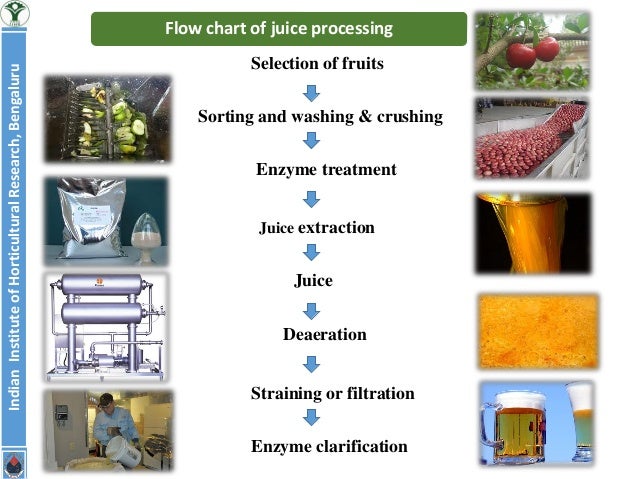
In brewing, the malting of grain develops amylase and protease activities, which then act on the starch and protein reserves of the grain during. He was convinced that plant enzymes in food and supplements have a different function in human digestion than that of the body's own digestive enzymes.
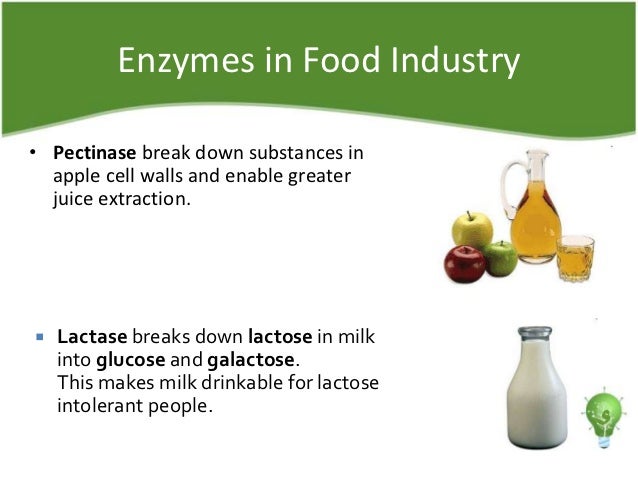
Iconic examples include rennet for cheese making, diastase for starch hydrolysis, pectinase for pectin hydrolysis, and amylases and proteases in the production of soy foods ( poulsen and buchholz, 2003, gurung et al., 2013 ). Enzymes have been used in food production for thousands of years.

Iconic examples include rennet for cheese making, diastase for starch hydrolysis, pectinase for pectin hydrolysis, and amylases and proteases in the production of soy foods ( poulsen and buchholz, 2003, gurung et al., 2013 ). This enzyme is used in food industry for producing flavour, colour and texture and improving nutritional quality of food.
It is used to solubilize the carbohydrates found in barley and other cereals used in brewing. The enzyme use by industries to pre digest certain foods allows the industry to broaden their consumer range and make more.show more content… scientist have recently discovered an enzyme that converts organic waste such as plant stems, leaves, paper,.

Pectinase includes two types, one catalyzing the depolymerization of pectin and the other catalyzing the hydrolysis of. Our early ancestors discovered that cows stomach could turn milk into cheese.
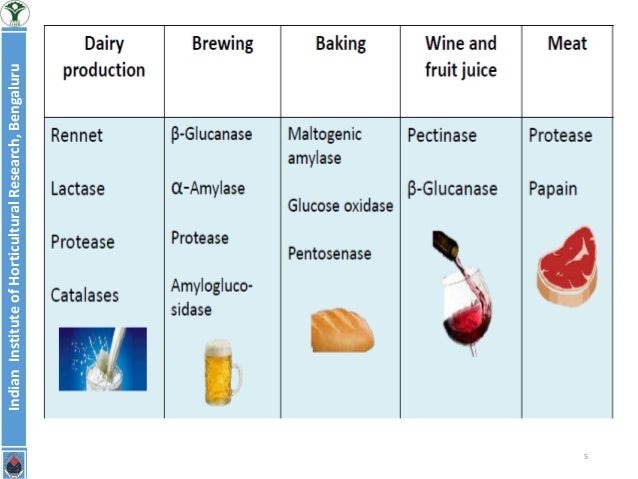
Food processing enzymes are used as food additives to modify food properties. One of the most important enzymes used in food industry is lipases.
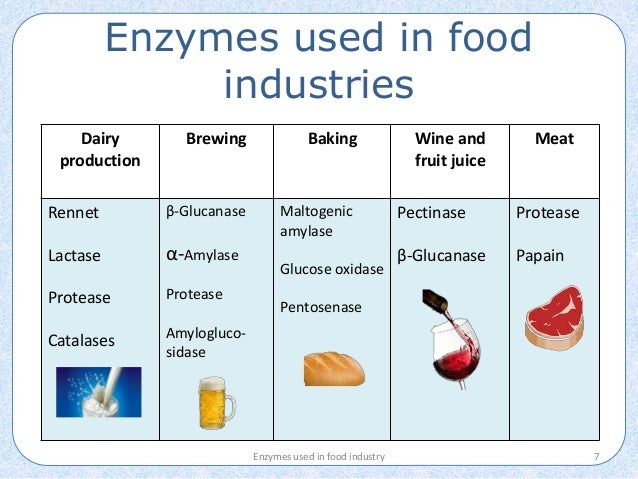
Summery enzymes are important biocatalysts in food industry as they perform specific reactions essential for food production and processing. The safety of the source organism is the primary consideration in assessing an enzyme product.
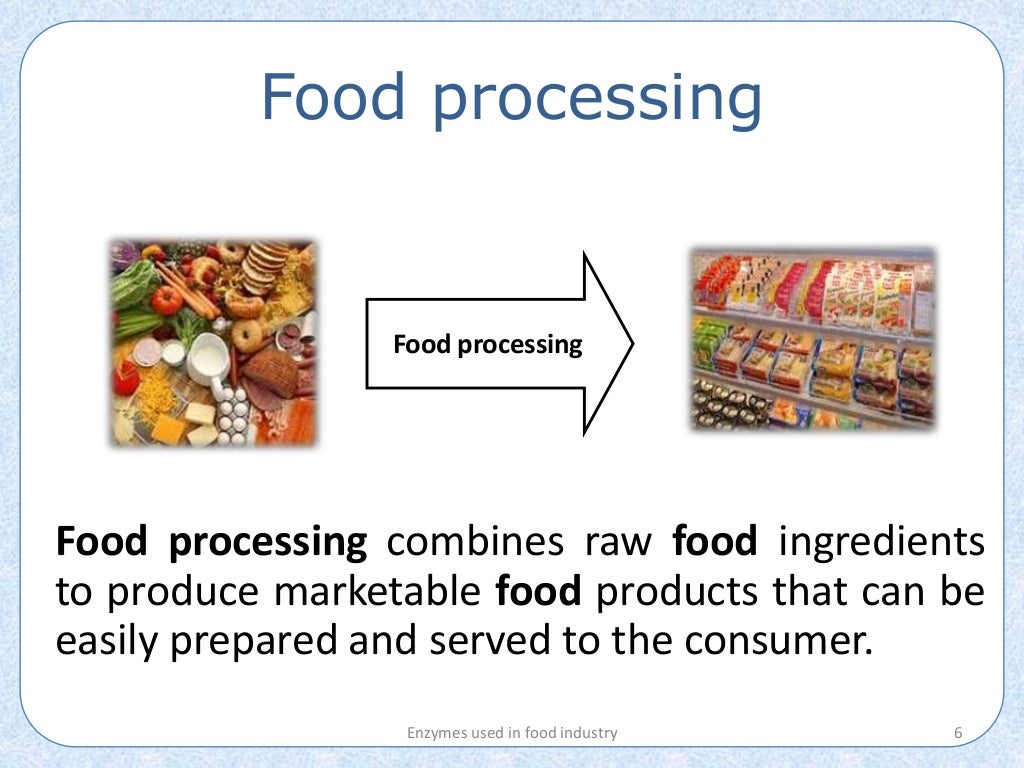
One of the most important enzymes used in food industry is lipases. Other applications include as biosensors, in polymer synthesis and in the management of pollutants in the environment.
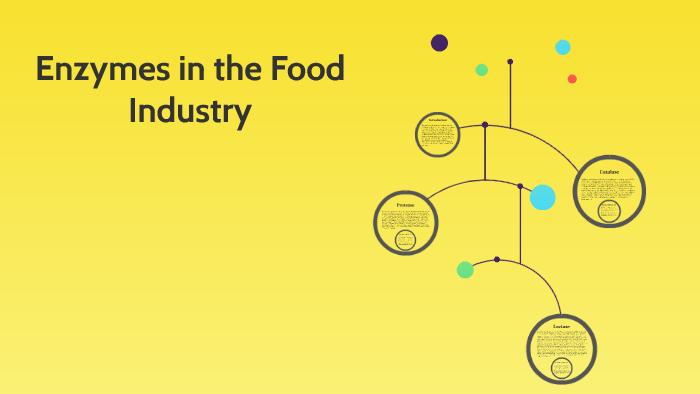
Worldwide, microbial enzymes are efficiently utilized in bakery—the principal application market in food industry—to improve dough stability, crumb softness and structure, and shelf life of products. Enzymes have been used in food production for thousands of years.
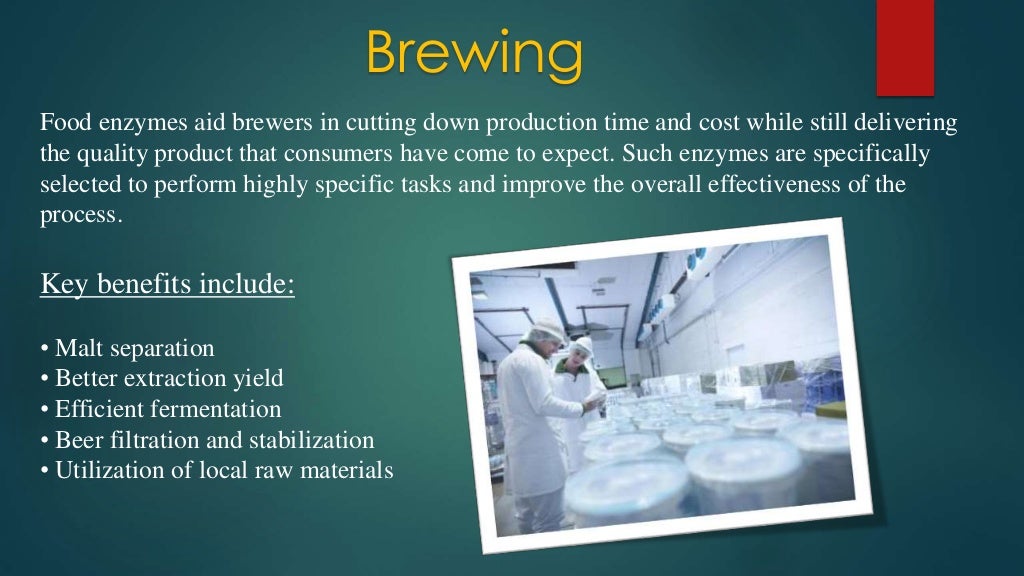
In brewing, the malting of grain develops amylase and protease activities, which then act on the starch and protein reserves of the grain during. New and unique enzymes continue to be developed for use in enzymatic reactions to produce food ingredients by hydrolysis, synthesis, or biocatalysis.

Industrial applications of pullulanase enzyme starch processing industry. Worldwide, microbial enzymes are efficiently utilized in bakery—the principal application market in food industry—to improve dough stability, crumb softness and structure, and shelf life of products.

Enzymes play a crucial role in the food industry due to their impressive catalytic traits to transform raw materials to enhance food quality. Enzymes may be used as a unit operation within a process.
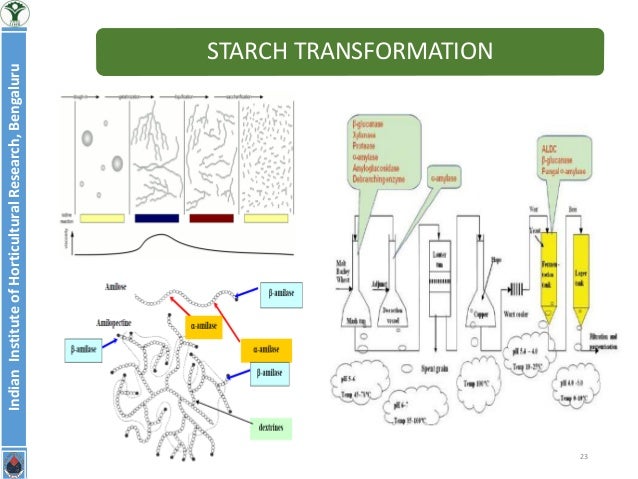
Today, we use enzymes in food to manufacture of everything from bread, wine, beer, juice and dairy processing and much more besides. One of the most important enzymes used in food industry is lipases.

Food processing enzymes are used as food additives to modify food properties. This attribute makes enzymes an integral part of food processing industry across the globe.
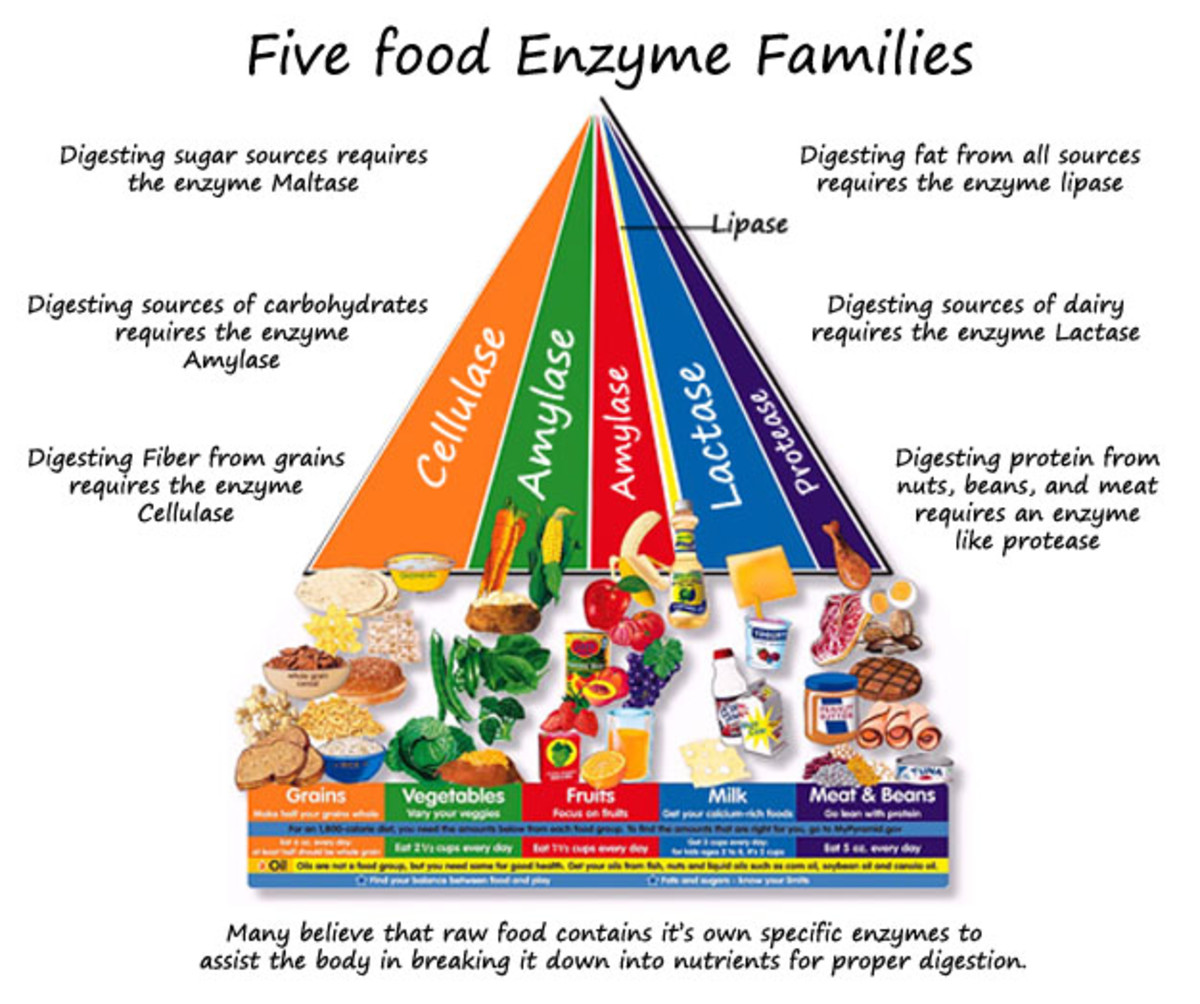
Some of the enzymes generally employed in food industry are listed below: Ranging from the food industry to medicine and textile industries, enzymes are widely used now a days for desired product formation.
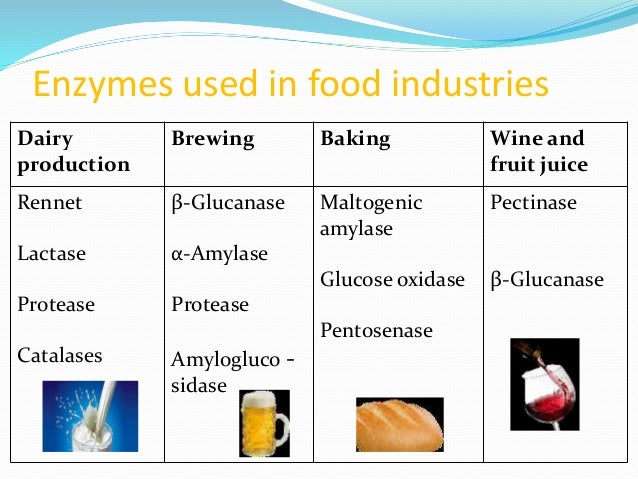
It is used to solubilize the carbohydrates found in barley and other cereals used in brewing. Some of the enzymes generally employed in food industry are listed below:

Some of the enzymes generally employed in food industry are listed below: Ranging from the food industry to medicine and textile industries, enzymes are widely used now a days for desired product formation.
Food Processing Enzymes Are Used As Food Additives To Modify Food Properties.One of the most important enzymes used in food industry is lipases. Here are some enzymes used in food production especially the baking industry: New and unique enzymes continue to be developed for use in enzymatic reactions to produce food ingredients by hydrolysis, synthesis, or biocatalysis.
Still There Is A Constant Urge For Process Improvement And/Or For The Development Of Novel Processes Or Products That Pushes Industry To Find New Alternatives, Including.The growing demand for sustainable food has. Food animals and edible plants have a history of safe use as sources of enzymes for the food industry. Sometimes they have certain undesirable effect on food products like disoloration and off flavor formation.
He Was Convinced That Plant Enzymes In Food And Supplements Have A Different Function In Human Digestion Than That Of The Body's Own Digestive Enzymes.Breakdown of glucans in malt and and other materials Enzymes square measure proteins that may increase the speed of biological changes like the ripening of fruit. Enzymes play an important role in the food industry in both traditional and novel products.
Pectinase Includes Two Types, One Catalyzing The Depolymerization Of Pectin And The Other Catalyzing The Hydrolysis Of.This enzyme is used in food industry for producing flavour, colour and texture and improving nutritional quality of food. Industrial applications of pullulanase enzyme starch processing industry. 1878 yeast cells which cause fermentation were identified and the term 'enzyme' has first named meaning.
Ranging From The Food Industry To Medicine And Textile Industries, Enzymes Are Widely Used Now A Days For Desired Product Formation.Enzymes have been used in food production for thousands of years. Enzymes have been used in food production and processing for centuries. The role of enzymes in the food industry.
Komentar
Posting Komentar